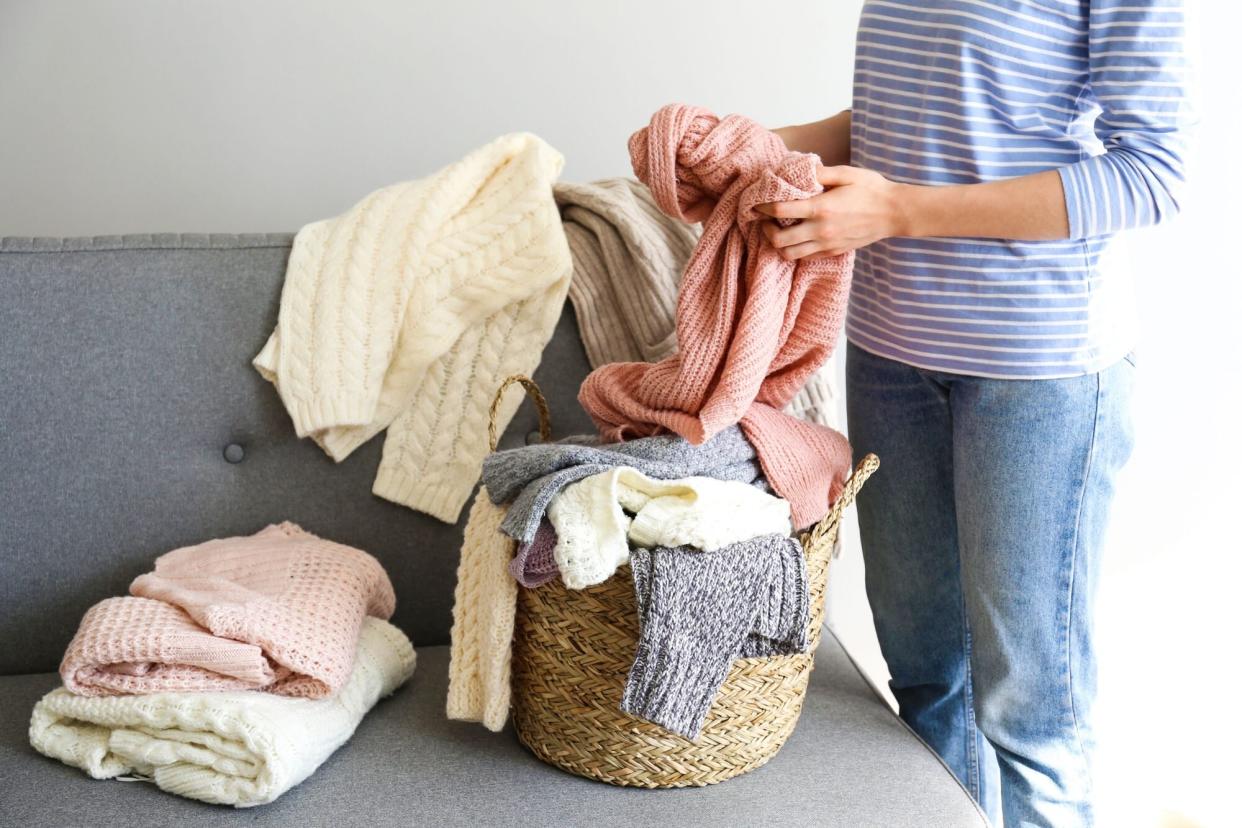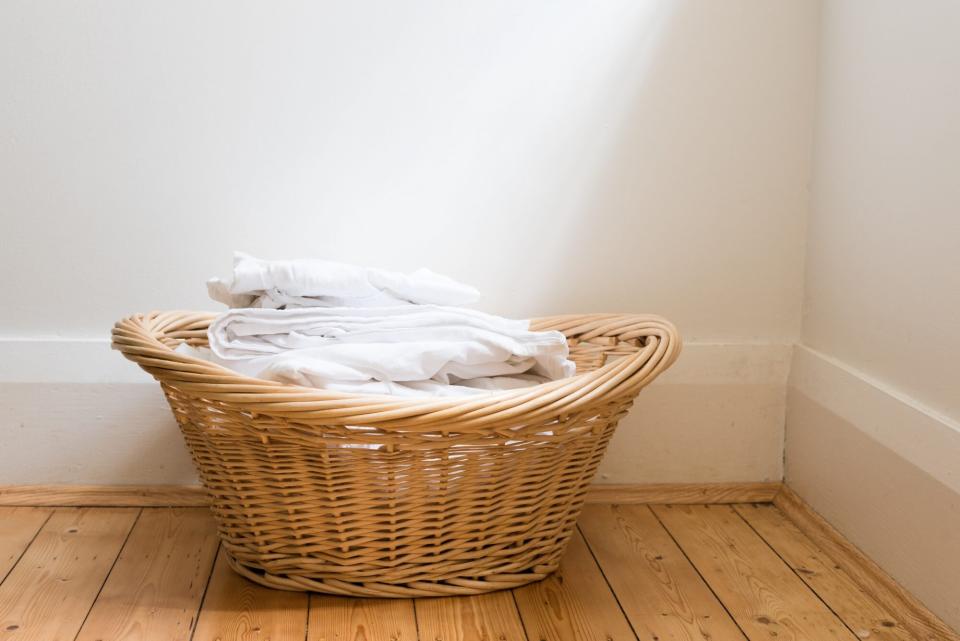How to Sort Laundry the Right Way, According to Experts

GETTY IMAGES
TABLE OF CONTENTS
On This Page
Why Sorting Is Necessary
Sorting Strategies
Preparing to Wash Your Sorted Laundry
Between loading your soiled clothing in the laundry basket and tossing it in the washing machine lies one essential practice: sorting. Although it's easy to brush off this process during prep, it contributes to the longevity of your garments. Here's what the experts say about whether you should sort your laundry or not—and the best way to do it.
Related: Who Says Laundry Baskets Have to Look Utilitarian? Here Are Some of Our Elevated Favorites
Is Sorting Laundry Really Necessary?
In short, yes—and there are several reasons why.
Sorting Prevents Wear and Tear
It's important to sort your laundry to prevent damage to the fabrics, says Maria Mooney, brand director of Truly Free. "For example, sorting materials like dry-fit is essential to ensure those fabrics don't get washed in hot water, put into the dryer, or washed with fabric softener, which would ruin the material," she says.
Sorting Stops Dye Transfer
Putting garments with like colors together helps avoid dye transfer. "It also helps avoid the more subtle issue of small amounts of color redeposition on the same kind of white T-shirt that makes it look dingy over time," says says Wendy Saladyga, a stain expert and senior manager of technical performance for Persil ProClean laundry detergent.
Sorting Improves Efficiency
This process also allows you to have more efficient loads. By sorting, you will be able to have larger loads, rather than an abundance of smaller loads, since you might not spot all of the necessary items at once that you want to wash together.
Sorting Allows for Proper Treatment of Soiled Items
Sorting laundry also allows you to wash heavily soiled laundry items together, like dirty towels, cloth diapers, or garments with grease stains. In turn, you'll be able to pre-treat items with tough stains in advance, says Mooney.
Sorting Strategies
Begin by sorting your laundry by category. The best way to separate garments is to sort "like with like," says Saladyga.
"If you care most about color fade and dye transfer, prioritize sorting by color," she says. "If you know you have lots of delicate fabrics, add in a category for fabric type or hand washing." After this point, you should be able to adjust for things like water temperature and any care label instructions. Here are the most common ways to sort laundry.
By Temperature
An essential part of sorting your laundry is pairing items together that need to be washed at the same water temperature, says Lindsay Jones, the new product brand manager at Maytag. Here is a general guideline, but be sure to also check your garments' care labels.
Cold
Cold water is recommended for delicate fabrics, lightly soiled garments, bright or dark-colored cottons, linens, and casual or mixed loads, says Jones. "Certain stains, like blood and toothpaste stains, are best treated with cold water," she says.
Warm
If you're filling your washing machine with warm water, synthetic fabrics like nylon and poly-blends, small comforters, non-iron fabrics, and lightly soiled clothing like blouses, dresses, and pants, are best for the load, notes Jones. For specific dense stains from red wine or chocolate, you will need a combination of cold then warm water.
Hot
White garments are refreshed best in hot water. Think: white pre-shrunk cotton, towels, sheets, heavily soiled items, and sturdy colorfast fabrics. Stains from lipstick, sweat, and grass should be treated with the hottest temperature water possible, says Jones.
By Color
Again, sorting your items by color can help prevent the redeposition of dyes onto different colored clothes, says Saladyga. A perk to washing by the hue of your garments is that you are usually also naturally separating fabrics by wash temperatures, she says, as white garments can typically be washed at a higher temperature than darker colors. However, always check the care label to be sure.
She recommends sorting your garments as follows:
Whites
Blacks and dark blues
Blues
Reds
Light colors
By Fabric
After sorting garments by color, make sure to separate fabric types so they have the right care and water temperature settings. "Once you have the piles separated by color, you can separate them by lightweight and heavyweight," says Saladyga. "If you don't separate by weight, the drying time is dependent on the heavyweights, so the lightweights will be in there much longer than they need to be, which can cause more damage over time."
Pair lightweight items, like polyester materials, together. Put heavy materials like cotton, which often retain more water, in a separate section.

natalie_board / Getty Images
Preparing to Wash Your Sorted Laundry
After you have sorted your clothes, it's time to survey how soiled your items are so that you can effectively pre-treat any stains, says Saladyga. "Typically, the fresher or more recent the stain, the easier it is to remove," she says.
To pre-treat tough stains, use a heavy-duty detergent like Persil ProClean +OXI Liquid Laundry Detergent by applying a small amount of detergent directly to the stain and let it soak for 10 to 15 minutes before washing according to care label instructions.
Protect your garments by assessing if they need to be turned inside-out due to embellishments, embroidery, zippers, and any other hardware. This step can prevent potential damage to the washing machine, too, and allow you to find out if items would benefit from hang-drying to prevent additional exposure to heat.

